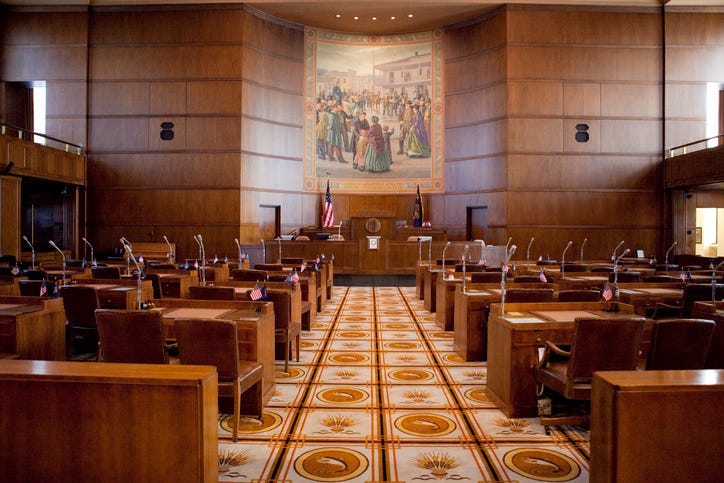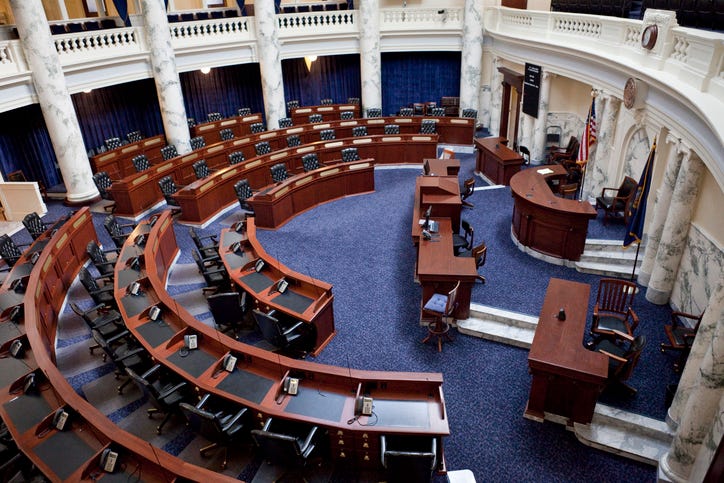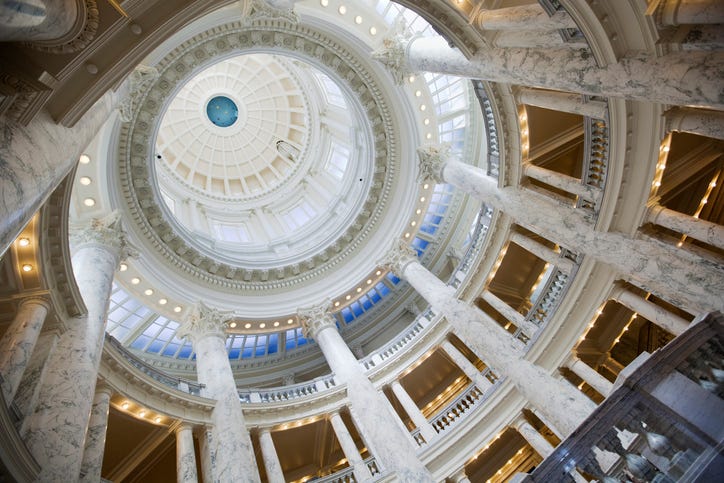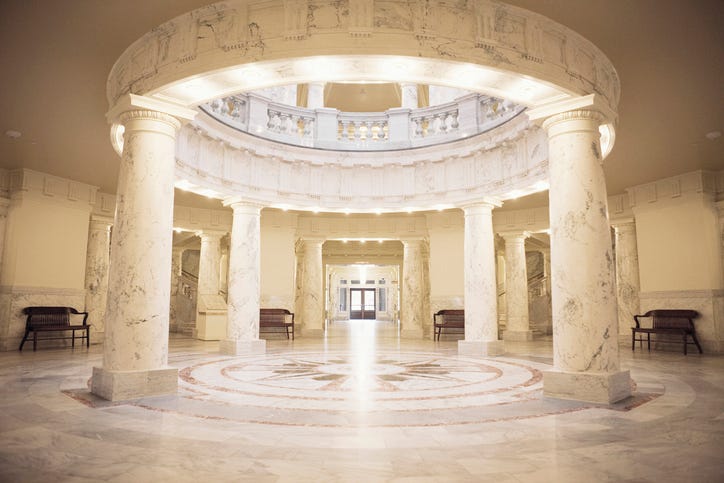State Identity in Stone: Comparing the Oregon and Idaho State Capitols
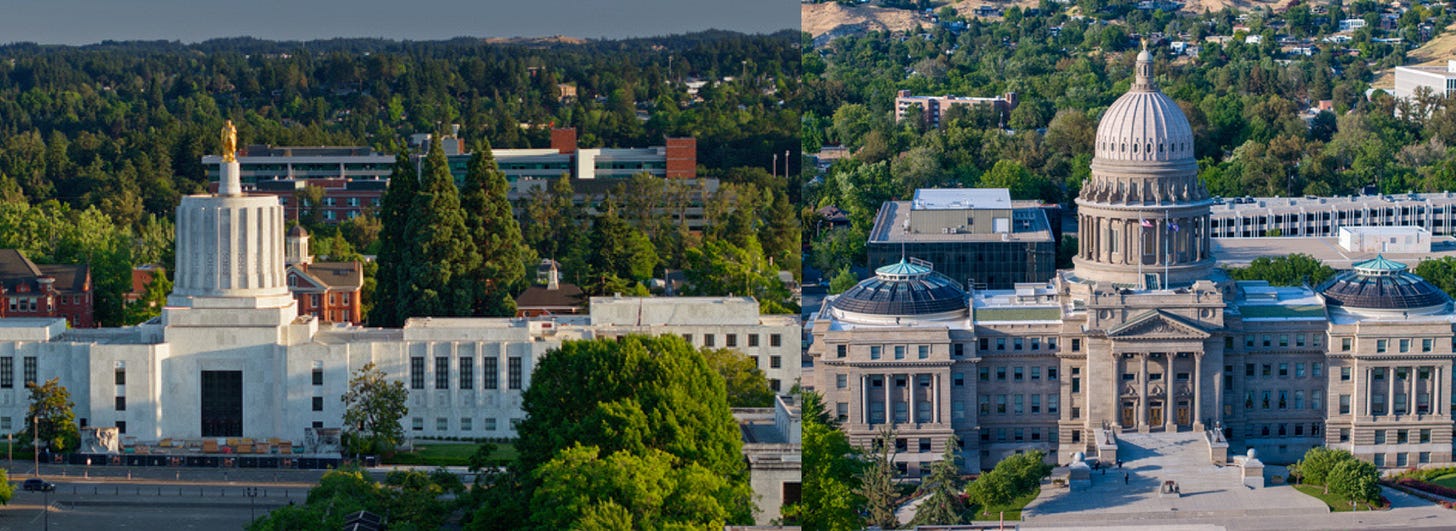
Two years ago, after living in Oregon for more than 30 years, I made the move to Idaho. While Idaho is now home, Oregon will always be a part of me. I still spend a considerable amount of time there—serving my clients, hanging out with long-time friends, and enjoying the contrast in weather, scenery, and culture. In many ways, I feel like I live in both places at once, appreciating the unique characteristics of each state. Idaho’s rugged wilderness and free American spirit inspire me with their emphasis on individuality and civic responsibility, but I’ll always have a deep fondness for Oregon’s progressive ideals and its vibrant, diverse landscapes.
I’ve always been fascinated by how the built environment of a society reflects its values. Architecture isn’t just about function or aesthetics; it’s a mirror of the culture that creates it, a way to capture values, priorities, and aspirations in physical form. This idea is especially clear when comparing the Oregon and Idaho State Capitols. Both buildings serve as symbols of governance, but their designs couldn’t be more different. Oregon’s stripped classical, Art Deco-inspired Capitol is modern and understated, while Idaho’s grand, Renaissance Revival Capitol embraces tradition and ornate detail. Each building tells a story about its state, revealing what the people of that time valued most.
Oregon: A Practical and Forward-Looking Approach
The Oregon State Capitol, built in 1938, stands out for its simplicity. Designed in the stripped classical style with hints of Art Deco, it doesn’t have the over-the-top ornamentation you might expect from a capitol building. Its white marble exterior is clean and streamlined, and its dome is a simple cylinder topped by the gilded statue of the “Oregon Pioneer,” a nod to the state’s history and the spirit of exploration.
Oregon’s Capitol feels very practical, much like the state itself. It doesn’t try to wow you with grandeur; instead, it quietly celebrates the region’s history and natural beauty. Inside, murals depict key moments in Oregon’s story, like the Oregon Trail. The whole building feels rooted in the state’s progressive, innovative mindset—focused on sustainability, community, and moving forward. While it’s not what you’d call flashy, it has its own charm, and it reflects Oregon’s forward-thinking values.
Idaho: Tradition and Grandeur
On the other hand, the Idaho State Capitol, completed in 1920, takes a completely different approach. It’s a showstopper. Inspired by classical architecture, it looks like it could have been plucked right out of ancient Rome or Greece—or at least Washington, D.C. Its grand dome, flanked by towering Corinthian columns, is the kind of thing that makes you stop and stare. Inside, there’s marble everywhere—red, green, and gray—along with intricate plasterwork and other fine details that make the building feel both timeless and impressive.
Idaho’s Capitol speaks to something deeper: a sense of pride in the state and its connection to enduring democratic ideals. By echoing classical architecture, it ties Idaho to centuries of governance and tradition. It’s not just a building; it’s a statement about strength, stability, and the importance of history. To me, that kind of grandeur feels inspiring. Walking through its halls, you can’t help but feel a sense of pride—not just in Idaho, but in the country as a whole.
Why I Prefer Idaho’s Capitol (But Respect Oregon’s Too)
Having lived in both states, I can see the appeal of both designs, but Idaho’s Capitol speaks to me in a way Oregon’s doesn’t. I appreciate the sense of aspiration and pride that comes through in the ornate details and classical elements. It feels bigger than just Idaho—it feels connected to something larger, like the ideals of democracy and civic responsibility. The building makes a statement about who we are and what we value, and it’s a place where you can feel proud to be part of this state and this country.
That said, I respect Oregon’s Capitol for what it is. Its simplicity and modern feel reflect Oregon’s practical, forward-looking nature, and I can see why that would resonate with people who value innovation and understated beauty. While it doesn’t have the same emotional pull for me, it’s a building that feels very true to Oregon’s identity, and I admire that.
Two States, Two Stories
Ultimately, these two capitols are more than just government buildings. They tell stories about the states they represent. Oregon’s Capitol captures a progressive, community-focused spirit, while Idaho’s celebrates tradition, pride, and history. Both are reflections of their people, their values, and their aspirations. And while I’ll always have a special place in my heart for Idaho’s grand, classical design, I can appreciate the unique charm and meaning behind Oregon’s simpler, more modern approach.


